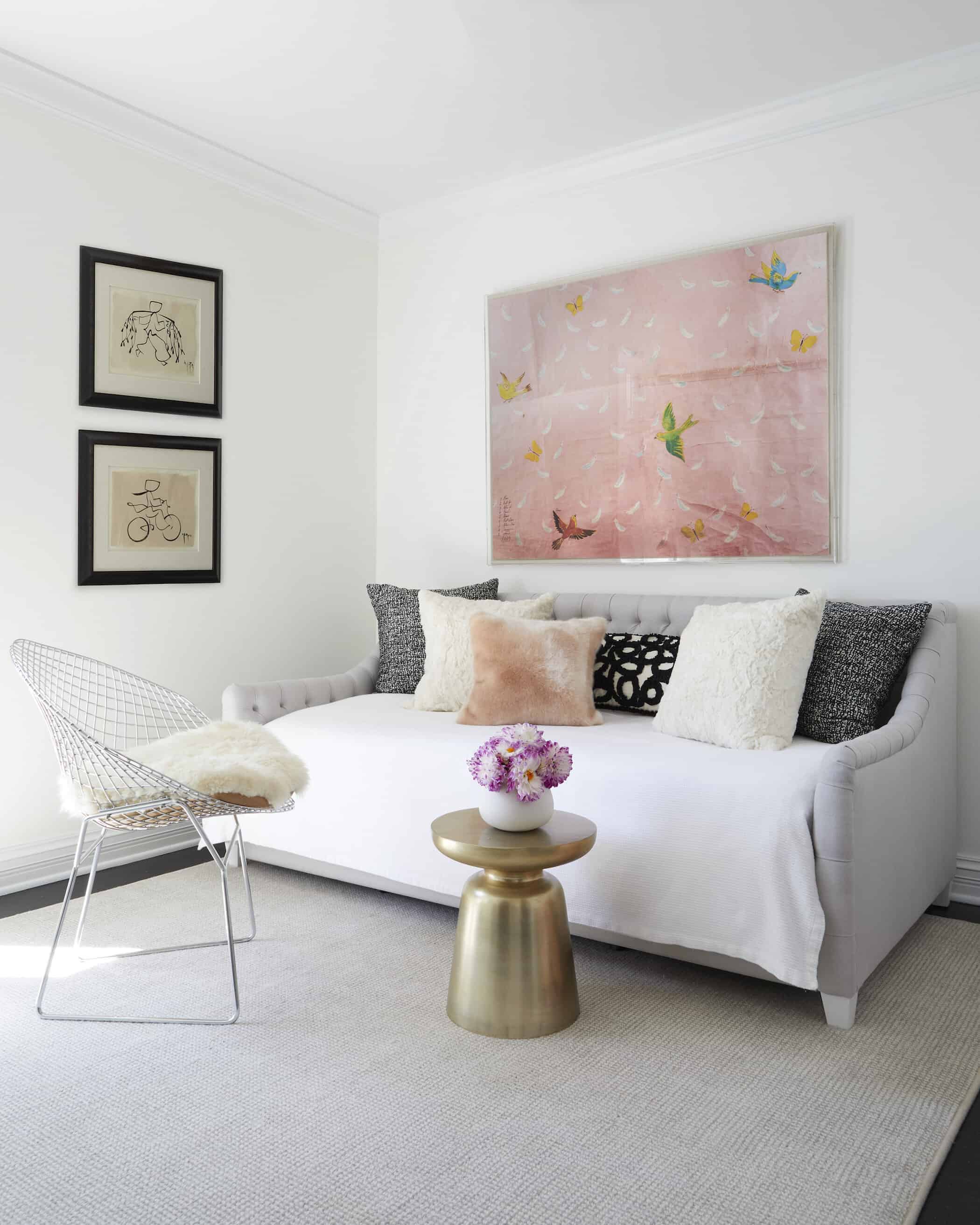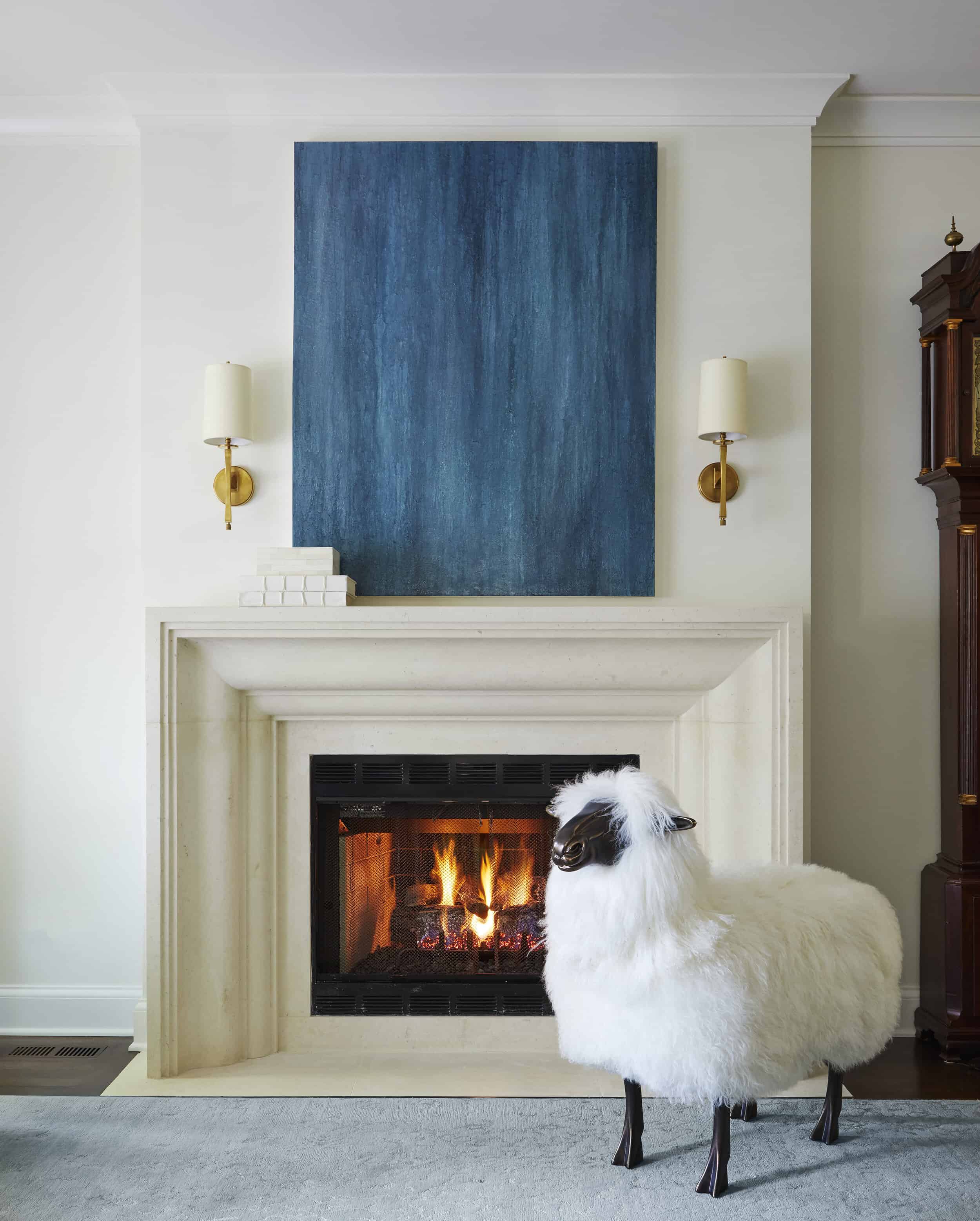Art is such an essential part of any home: it breathes life into the rooms, livens the walls, and fills the home with emotion, passion, history and culture. The inherent character that comes with any piece of art creates a deeper context, filling the home with emotions that furniture and wall coverings simply cannot do on their own. An artist’s touch can truly bring your home to life.
One of my favorite parts of the design process is working with homeowners to find art that feels like a pure reflection of their personality. I whole-heartedly believe that a home isn’t complete without artwork, whether that’s an original piece, a poster, or something you discovered on your travels, so I’m so excited to center today’s blog post around the how-tos of sourcing and styling artwork to complete your space.
Create a mood board.
If the world of art feels a bit intimidating and you’re not quite sure where to begin, create a mood board. I love to incorporate this step when working with clients without a pre-existing art collection or favorite artists, or those who aren’t certain of how to describe their style preferences. Together, we run through a range of genres, letting their intuitive responses guide the way, and then begin sourcing from artists or galleries that reflect the style they are gravitating towards.
Since art is such a visual and emotive process, sorting through imagery of artwork and creating a mood board can be an incredibly effective way to gain insight into your own art preferences.
Connect with artists.
Once you have a vision in mind, it’s time to connect with studios and artists. I enjoy connecting with the artists themselves, as you learn so much more about their lives, passions and the stories behind the works of art that will ultimately make their way into your space. It’s such a special experience to hear first-hand the process and thought that went into the creation of the piece, and I love for my clients to get to unpack all of those layers of meaning.
If you’re not sure where to begin, below are some of my favorite national and local artists (many of whom can be spotted around my own home!):
-
Mark Revers (my brother)
-
Matt Revers (my other brother!)
Source as you travel.
Another great way to source incredible art is to gather it while you travel. Not only can you find beautiful, culture-packed works of art, but these pieces will also add a memorable touch to your home, drawing you back to your hike through Patagonia or your getaway to Bali.
I always come back with a piece of art from my travels and I cherish the energy it adds to my home — these artworks are rich with personal meaning.
Consider five key variables.
I like to keep five things in mind when sourcing a piece of art: scale, color, connection, style and budget. These five determining factors will help you narrow your focus and find the perfect piece for your home. But, if you only take one piece of sourcing advice from me, make it the next one …
Ultimately, buy what you love.
I truly believe that if you love a piece of art, it belongs in your home. While color, style and scale are important, I always prioritize what my heart is telling me. If a piece fills me with joy, or catches my eye every time I walk past it, I will find a way to make it work in my home.
Selecting artwork is a much more personal process than simply trying to match it to the draperies or the sofa. It’s not just about the tones or the style: it’s about the raw emotion.
Buy what you love, and then alter the design.
If I am working with a client who has an extensive collection of art, we design to reflect the art, and use the five key variables I mentioned above to lead our design. Keeping existing art top of mind is crucial, so we simultaneously select furniture and plan the styling and placement of each piece of art.
If a client does not own art, and we are doing all the sourcing, we work with their art vision, and again let artwork play a key role in the design selections as we create a cohesive whole.
Either way, if you love a piece of art, you can make it work.
Invest in proper framing.
Once you’ve selected artwork, invest in the framing process. Framing is itself a decorative art and should never be overlooked. A beautiful frame can heighten the love you have for the artwork and add visual context to the piece.
It’s important to partner with a great framer who has a detailed eye (if you’re local to the Chicagoland area, I love Alley Gallery in Evanston). They can help guide you through all of the details of the process, from ensuring the corners are a true 90 degrees to mastering the floating mat board so the art does not touch the glass.
One warning: the biggest mistake you can make is to match the frame to your home and not the art itself. The frame should accentuate the art, complementing its character.
My top styling tips:
-
Frame modern art in a beautiful gold, old world frame or frame vintage art in a striking, contemporary frame — the contrast sets up amazing visual tension.
-
The smaller the piece, the larger the mat; the larger the piece, the smaller the mat. Stick with white or cream mats as colored ones tend to look dated in a few years.
-
If you are doing a gallery wall, stick with minimal matting or none at all.
Illuminate your art.
Don’t miss out on the final grace note: illuminating your artwork. Not only will art lights add a stylistic touch, but more importantly, they will help you get the full benefit of the piece. Remember that light has a vast influence on how things appear: Oil paintings, for instance, are typically textured, so lighting can cause shadows or highlights to appear and make the piece feel like it is jumping off the canvas.
A good rule of thumb is to light artwork three times brighter than the rest of the room and to angle picture lamps at 30 degrees. Also, ensure your light is broad enough so that the full piece is evenly illuminated.
As you can see, I’m passionate about art, and it has been a joy sharing my sourcing and styling tips. Let me know your thoughts below: do you have art in your home, or are you new to sourcing art? What do you love most about art in the home?








Great post, Amy! Yes, starting is the hardest part. Thanks for the tips.